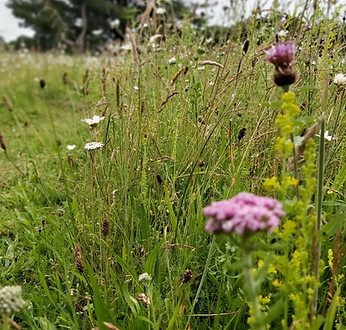

Designing for wildlife
Wildlife needs help more than ever before, and your garden can play a crucial role in helping to support it.
A wildlife garden can be elegant and beautiful and designed to attract both human beings and wildlife alike. Sharing our gardens with the natural world brings positive changes to our planet and also improves our mental health and well-being.
Many of our common garden visitors including hedgehogs, house sparrows and starlings are increasingly under threat. By restoring and enhancing existing spaces, large or small, we can encourage the widest possible range of wildlife into our gardens, collectively making a huge difference.
If you would like to know more about my work, please visit my Instagram page for regular updates.


"Think of your garden as nature's bed and breakfast...
you can't provide one without the other."
Rewilding...not just a 'buzz' word!
In my experience as a garden designer and nature enthusiast, I have come to realise that the term 'rewilding' has been used more frequently in recent years. Quite often I believe this term has been misunderstood.
Many people believe that rewilding a garden can be achieved by leaving their own garden to grow wild. Sadly, this is not always the case and has little or no benefit to wildlife at all. They are often missing the right conditions needed for a healthy ecosystem, such as a diversity of habitats and planting.
A wildlife garden can be achieved in any sized plot, as long as a little forethought and preparation has gone into it from the start, allowing us to kick-start those ecological processes that naturally occur in the wild.
Once the garden is established, very little intervention should be needed because the sustainable nature of the design means your maintenance regime will be minimal, allowing you to sit back and immerse yourself in nature.

Plants for Wildlife
"Variety is the spice of life!"
It's true....at least for the natural world. Adding a variety of different substrates means we can grow a variety of different plants. This means more biodiversity! Extending the flowering season right through winter will also support resident wildlife too.
Charity initiatives

As a registered volunteer for the
Bumblebee Conservation Trust, I visit local primary schools and conservation charities in my spare time, to raise awareness about the importance of bumblebees.
These projects help to educate and inspire the younger generation to think about ways of protecting our wild bees, which are fundamental to our wellbeing.
Please contact me if this is something you would be interested in for your local school or community conservation project.




